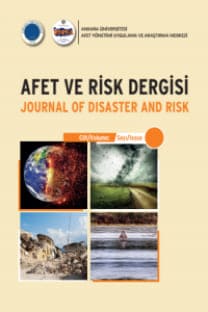Düzenli Bir Betonarme Binada Düşey Deprem Bileşeninin Yapısal Davranışa Etkisi
“Düzenli bir betonarme binada düşey deprem bileşeninin yapısal
davranışa etkisi” – olarak adlandırılan araştırmada depremin düşey bileşeninin
yapısal davranışa etkisini tespit etme doğrultusunda çalışma yapılmıştır. Çalışmada
öncelikli olarak bina türü olarak 5 katlı betonarme bina belirlenerek, yapı
elemanlarının ön boyutlandırması yapıldıktan sonra ülkemizde mühendislik
tasarım alanında sık kullanılan “Sta4CAD” mühendislik tasarım programı
yardımıyla yapı elemanlarının donatı hesabı yapılmıştır. Bilgisayar ortamında
hazırlanmış modele depremin etkisini uygulamak için yedi tane deprem kaydı
seçilmiştir. “Seismostruct” doğrusal olmayan çerçevelerin statik ve dinamik
çözüm ve analiz programıyla deprem kayıtları yatay ve yatay artı düşey olarak
modele tek tek uygulanmıştır. Analiz sonrasında yatay ve yatay artı düşey
deprem kayıtları etkisinden yapıda oluşan normal kuvveti, kesme kuvveti
karşılaştırılmıştır. Elde edilmiş veriler ışığında, depremin düşey bileşeninin
özellikle kolonlardaki eksenel kuvvetlerin artışına sebep olunduğu görülmüştür.
Kolon kesme kuvvetlerinde depremin düşey bileşeninin eklenmesiyle önemli
miktarda artışlar gözlenmese de yaklaşık yüzde 10 oranında artış
kaydedilmiştir. Kat ötelemelerinde ve toplam yapısal deplasmanda ise belirgin
değişiklikler kayıt edilmemiştir.
Effect of The Vertical Earthquake Component on Structural Behavior of A Regular Reinforced Concrete Building
After some observations of design practices worldwide, it
is generally considered horizontal components of earthquakes are more
destructive than vertical components. Because of this fact, it's vertical
components of earthquakes are sometimes neglected. On the other hand; some
recent observations have revealed that the vertical components of earthquake
can have more destructive effects on buildings. In this analytical study,
investigations were conducted to evaluate effects of vertical components of
earthquake on structural behavior of buildings. Firstly, type of the building
was determined, and preliminary calculations of structural elements were made,
and the calculation of reinforcement of structural elements was made by the
computer program Sta4CAD. Seven earthquake records were selected and their
effects applied to the computer models prepared.
With the help of program “Seismostruct” horizontal,
horizontal plus vertical forces of earthquake records were applied to these
models. Results analyses, from exposure of horizontal, and horizontal plus
vertical earthquake forces were compared, values of normal forces, shear forces
of the structure were examind and it was found that the horizontal plus
vertical components influenced the building axial forces on columns, especially
in the middle columns. Although, shear forces did not show a significant
increase on columns, the difference in one of seven earthquake records was ten
percent. No changes were recorded in shear forces on structural beams. No
significant changes have been found in displacement and story drifts too.
___
- [1] Sta4CAD - http://www.sta4.net/ [2] Seismosoft - https://www.seismosoft.com/seismostruct-prod[3] N. A. Abrahamson and J. J. Litehiser (1989). “Attenuation of vertical peak acceleration”, Bull. seism. soc. Am. 79, 549-580.[4] Y. Bozorgnia, M. Niazi and K. W. Campbell (1995). “Characteristics of free-field vertical ground motion during the Northridge earthquake”, Earthquake Spectra 23, 51 5-525.[5] A. J. Papazoglou' and A. S. Elnashai (1996). “Analytical And Field Evidence Of The Damaging Effect Of Vertical Earthquake Ground Motion”. Earthquake engineering and structural dynamics, Vol. 25, 1109-1137. [6] Ambraseys, N. N. and Douglas, J (2003). “Effect of vertical ground motions on horizontal response of structures”. International Journal of Structural Stability and Dynamics, 3 (2). pp. 227-265. [7] “TS500”, Şubat 2000 – Betonarme Yapıların Tasarım ve Yapım Kuralları..[8] “DBYBHY-2007” – Deprem Bölgelerinde Yapılacak Binalar Hakkında Esaslar.[9] “PEER Ground Motion Database, NGA-West2” – https://ngawest2.berkeley.edu
